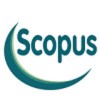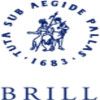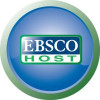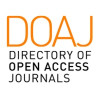Research Article
Aim & Scope
The main goal of Dilbilim Araştırmaları Dergisi/Journal of Linguistics Research is to support the development of research in general linguistics in Turkey by encouraging contributions of high scientific quality. The journal also invites contributions on issues pertaining to various aspects of language that would be of interest to a broad range of readers and aims to be a platform of discussion on such topics.
Dilbilim Araştırmaları Dergisi is mainly but not exclusively devoted to problems of contemporary linguistics in Turkish and other Turkic languages. It also aims to be a platform for language specificity as well as diversity and welcomes work on endangered languages in EuroAsia or elsewhere in the world. It publishes papers written in Turkish or English both in theoretical and applied linguistics and is open to manuscripts based on emprical, data-driven research as well as those that cross disciplinary boundaries. The only criteria for the selection of papers for publication is originality and scholarly standing. The journal does not require a particular theoretical orientation and it does not commit itself to a specific area of linguistics.
In
addition to original research articles, Dilbilim Araştırmaları Dergisi
publishes book reviews that critically assess the contents of a recently
published book, particularly but not exclusively on Turkish, Turkic
languages or endangered languages in EuroAsia.
Dilbilim Araştırmaları Dergisi occasionally publishes a special issue. The
editors may invite scholars to edit a special issue. Alternatively,
prospective editors who wish to compile a special issue on the topics
that are in the journal's scope may contact one of the editors. The
manuscripts planned to be included in a special issue are subject to
similar peer review process.
Author Guidelines
Please follow these guidelines when you submit your article for consideration by Dilbilim Araştırmaları Dergisi (DAD)/Journal of Linguistics Research (JLR).
* Journal of Linguistics Research publishes research articles and book reviews and rarely studies on introducing innovative and recent research.
* The manuscript can only be submitted with the permission of all of the co-author(s), if there are any. The names of the author(s) must be within the knowledge of the editors when the manuscript is submitted.
* In the author's preprint version sent to DAD/JLR for evaluation, the authors' identity should not be revealed; the parts for authors' name, affiliation and email address should be left blank. Such information will be required after a manuscript has been accepted for publication in the journal.
* The names of the author(s) are always secured to remain anonymous before sent to the reviewers. The names of the authors should not be changed after the submission.
* To maximize anonymity, the authors are also encouraged to remove their names from the submitted documents. Before submitting your manuscript, please follow the steps described in this link to remove any names from your document.
* A research article should not exceed the limit of 9000 words, including the references, footnotes, and appendices.
* A book review should not contain more than 4000 words including the references, footnotes, and appendices.
* If there are acknowledgments or references that uncover the identity of the author(s), they should be added to the manuscript after it is accepted for publication.
* The Researchers' Contribution Rate statement should be included at the end of the manuscript.
* Glossing abbreviations should follow the Leipzig Glossing Rules (http://www.eva.mpg.de/lingua/resources/glossing-rules.php).
* Authors are advised to obtain an ORCID ID before submitting an article to the journal. Right after the review process, in case of acceptance, they should add their ORCID ID as a hyperlink right after their name in publisher's version. Please visit https://orcid.org/ for information on how to get an ORCID ID.
1. Authors are responsible of submitting original research and follow the style sheet provided on the journal’s website.
2. Articles written in Turkish or English are accepted for evaluation.
3. All articles should include abstracts in Turkish and English which contain no more than 150 words.
4. Immediately after the body of the abstract, there should be keywords, minimum 3 and maximum 5 words. The keywords should closely reflect the article content and be written in 9 pt font size and in italics. The first letter of all the keywords should start with a lower case.
5. All articles should be submitted online using the Ulakbim Journal Systems at http://dad.boun.edu.tr
6. The article title should be 12 pt bold and center aligned. The first letter of the words in the title should start with a capital letter.
7. Articles should be written in A4 paper format. The margins should be 5,85 cm on the bottom, 5,85 cm on the top, 4,85 cm on the left and 4,85 cm on the right side. All fonts should be Times New Roman. The text should be 10 point, line spacing: Exactly, At: 12 pt, before: 0 pt, after: 0 pt; full justified.
8. All pages must be numbered.
9.
Articles should be divided into sections as:
· Title: 12 pt; boldface; center aligned; before: 0 pt, after: 24 pt; line spacing: exactly, 15 pt.
· Name of the Author(s): 11 pt; center aligned; before: 0 pt, after: 6 pt; line spacing: exactly, 13 pt.
· If an article has more than one author, each name should be separated with a comma.
· Affiliation: 10 pt, italic type, center aligned; before: 0 pt, after: 12 pt; line spacing: 12 pt.
· E-mail: 8,5 pt, italic type, center aligned; before: 0 pt, after: 36 pt; line spacing: Exactly, 12 pt.
· Abstract: Indent: 0,66 cm from left, 0,66 from right; first line (empty line); before: 0 pt, after: 0 pt; line spacing: Exactly, 5 pt, top border should be selected.
· Title: 9 pt, boldface; justified; before: 0 pt, after: 4 pt; line spacing: Exactly, 13 pt.
· Text: 9 pt; justified; before: 0 pt, after: 0 pt; line spacing: Exactly, 11 pt.
· Key words (3-5 words): italic type; justified; before: 4 pt, after: 0 pt; line spacing: Exactly, 11 pt.
· Last line (empty line); before: 0 pt, after: 0 pt; line spacing: Exactly, 5 pt; bottom border should be selected.
· Text: 10 pt, justified; before: 0 pt, after: 0 pt; line spacing: Exactly, 12 pt.
· References (Title): 10 pt, boldface, justified; before: 18 pt, after: 6 pt; line spacing: Exactly, 12 pt
· Text: 9 pt; justified; before: 0 pt, after: 0 pt; line spacing: Exactly, 11 pt; indent: 0,5 cm.
10. Endnotes should be avoided; only footnotes should be used. Footnotes should only be used where necessary. Authors should avoid using too many footnotes. Footnotes should be kept as short as possible and should not be used to list bibliographic entiries. The structure of footnotes should be as follows:
- 9 pt Times New Roman, full justified, before: 0 pt, after: 3 pt, line spacing: Exactly, 11 pt. There should be 0,5 cm spacing between the footnote number and the footnote text.
- Any acknowledgements should be provided in the footnote and shown with "*" added to the title of the article.
11. JLR heading formatting consists of 3 levels.
All major and minor headings must be formatted according to the rules below:
- In the first level headings (these are the basic parts of the article), the first word of the heading must be separated from the heading number with tab, starting from 0,5 cm to the left border of the text. All headings on this level should be capitalized. All words and title numbers should be written in bold. At the end of the title number, there shouldn’t be any "." (dot).
- In the second and third level headings, the first word of the second level heading must start at 0,75 cm indent; in the third level, there must be 1 cm indent from the left determined by the tab (according to the left border of the text). The headings in these two levels should be written in italics. In the titles on the second level, the first letter of all words must be capital. Only the first letter of the first word should be capital in the third level headings.
- On all three levels, the first letter after the colon ":" mark, if present in the title, must be capitalized. Other words following the colon mark must conform to the style required by the heading levels.
- If the text contains headings at levels lower than level 3, such as 2.1.1.1 and 2.1.1.1.1, they should all be formatted as the third level headings (leave a space of 0.5 cm between the last number of the title number and the first word of the title). Authors should avoid using headings extensively at levels lower than the third level unless absolutely necessary.
- The paragraph settings of the titles:
1st level: 10 pt, boldface, justified; before: 18 pt, after: 6 pt; 0,5 cm indent from the beginning of the line; indent: Hanging, 0,5 cm; line spacing: Exactly, 12 pt
2nd and 3rd levels: 10 pt, italic fonts, justified; line spacing: Exactly, before: 12 pt, after: 6 pt.; 0,75 cm indent from the beginning of the line;
2nd level: 0,75 cm; indent: 0,75 cm
3rd level: 1,00 cm; indent: Hanging, 1 cm
4.1 Second Level Heading Sample
4.1.1 Third level heading sample
12. All tables should have a caption at the top. Figures should have a caption at the bottom. Tables and figures should be numbered consecutively throughout the text. All tables and figures must be formatted according to the APA style.
Table 1. Title
|
Column Title |
Column Title
Column Title
Column Title
Column Title
text/numbers
text/numbers
text/numbers
text/numbers
text/numbers
text/numbers
text/numbers
text/numbers
text/numbers
text/numbers
14. If you are using Microsoft Word 2003 or later versions, to simplify the formatting process, you can refer to the built-in stylesheet menu from the DAD template file. You can simply download this file by clicking the link below:
https://drive.google.com/file/d/1bf68FjqlTXZcNO5LejXzgF7tB2NQwiWS/view?usp=sharing
Last updated: January 18, 2021
Ethical Principles and Publication Policy
You can use this link to view the Ethical Principles and Publication Policy of the journal.
Price Policy
There are no fees or charges required for manuscript processing and/or publishing materials in the journal’s website.
Indexes
Journal Boards
Editor-in-Chief

Editors


Assistant Editors






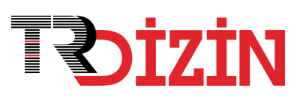

 Web
Web
Copy Editors







Advisory Board



This work is licensed under a
Creative Commons Attribution-NonCommercial-NoDerivatives 4.0 (CC BY-NC-ND) International License.
Journal DOI: 10.18492/dad

